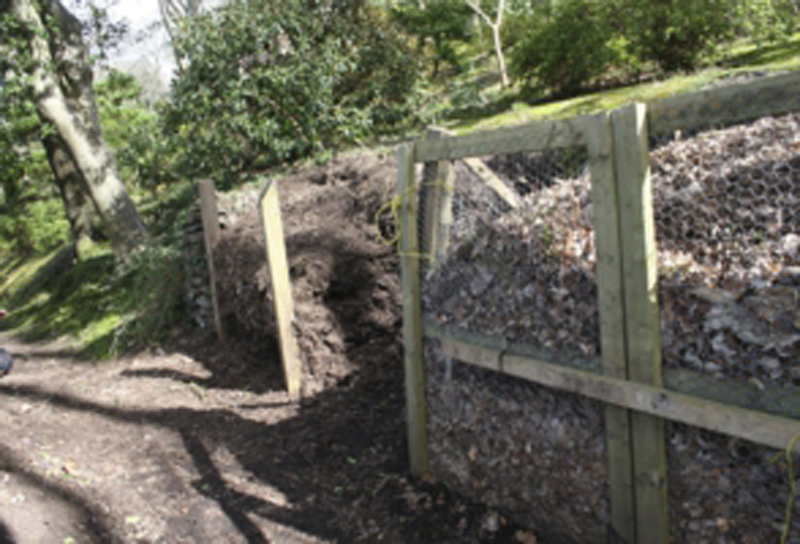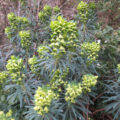by Sally Gregson.
Despite the heavy rains and winds, autumn has blown in with a spectacular show of colour this year. The leaves on the spindles – Euonymus – and Japanese Acers have turned a wicked red and screaming orange; the remaining fruits on the crab apples are sparkling like fireworks; and the ground is knee-deep in golden-brown leaves.
Leaf-mould is ambrosia to shade-loving plants. It takes a year or two for the leaves to rot down until they are ready to use in the garden. Make a ‘container’ for the leaf-litter by hammering upright posts in four corners with chicken-wire for the ‘walls’. The overall size should be as large as is practical. During the course of the autumn tip the fallen leaves onto the heap, adding some ‘accelerator’ every 30-40cm. If you can persuade the male members of your family and friends to recycle their cups of tea and beer, so much the better.
Adding a second containerised heap will mean that the leaves can be left for a year longer before being used. The resulting mix will be like Christmas cake – rich, moist and nutritious for every plant it dresses. Once the rains have returned in the autumn, use this well-rotted leaf-mould as a mulch on shady borders to seal in the moisture. Tuck it in around the crowns of special plants, preventing weeds from getting a hold, and add it to the soil when planting.
Shady gardens beneath mature trees can get especially dry even in a wet winter, and after this summer’s drought they are especially in need of attention. Ask a tree expert to look at the canopy with a view to creating gaps in the cover to allow the rain, and light, to fall on the ground beneath in pools. It’s a particularly skilled job to prune and cut back branches without butchering the tree in question, but the result will be a subtle joy.
Plant some specials in the sunny patches: Chinese and hybrid epimediums, Roscoea, Colchicum. They should be planted with plenty of the precious leaf-mould and a label to mark their positions when they go dormant. New hybrid epimediums are becoming more available, and the specialist growers have some very special forms. Roscoea are wonderfully exotic in appearance, but entirely hardy, flowering off and on throughout the summer, but completely dormant until late spring.
And colchicums mark the autumn with their translucent mauve flowers like spectral crocus. Spirits of the coming winter.









Leave a Reply